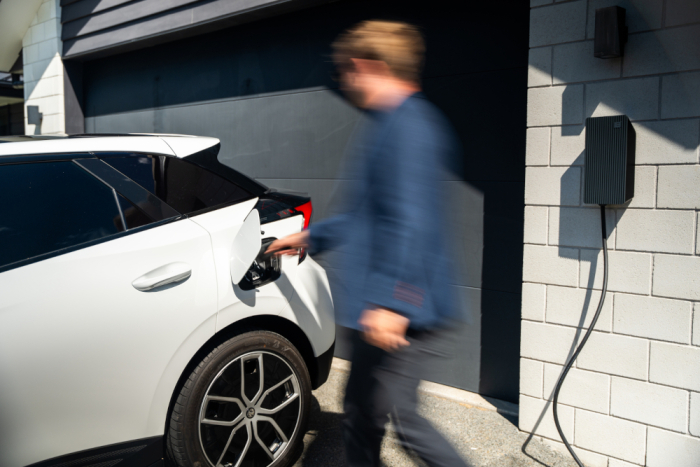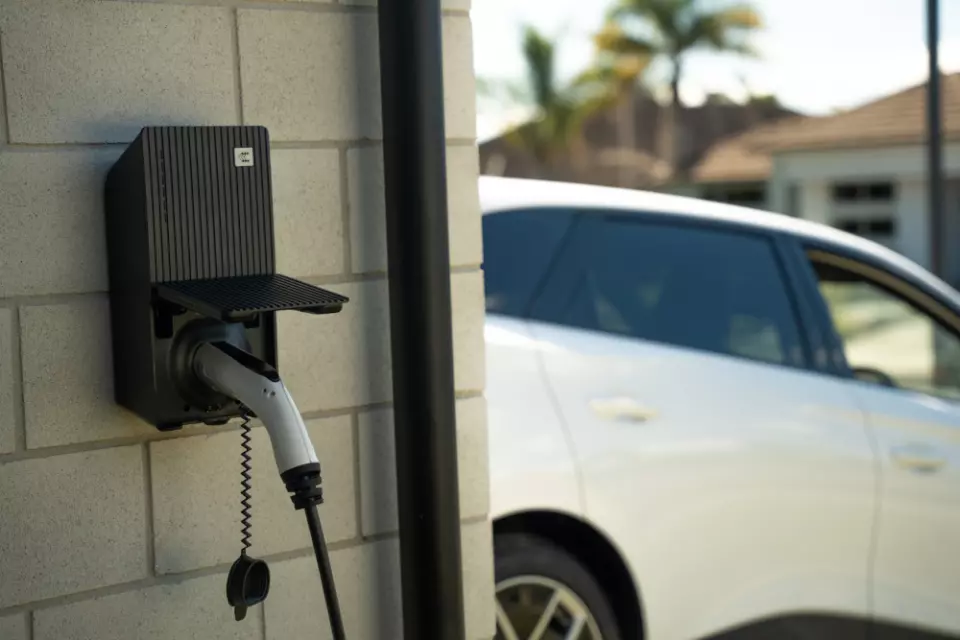They also take the pressure off a stressed power network - We.EV
With news power bills may be increasing to provide for electrical infrastructure upgrades as New Zealand’s electricity consumption surges, help may lie in the hands of current and prospective electric vehicle owners (EVs).
Making a smart charger part of a transition away from fossil fuels can effectively smooth electricity consumption – so distribution lines aren’t stressed past their maximum capacity, while simultaneously reducing monthly electricity costs for EV owners.
That’s according to Head of We.EV Craig Marshall, who says We.EV is installing home, business and public EV charging infrastructure which helps everyone use energy as efficiently as possible.
“When you’re adding hundreds of thousands of new electricity-hungry devices to the national grid over the next decade, two things happen,” says Marshall. “The first is that demand goes up, potentially stressing our generation resources, and secondly transmission and distribution networks come under strain.”

First, as they come under pressure, environmentally friendly resources like hydro, wind and solar electricity must be augmented with expensive intermittent generation. This causes the spot price of electricity to increase, sometimes dramatically.
Secondly, the capacity of transmission and distribution networks is placed under increased strain. With all this energy needing to make its way from generation to the end user, the simple fact is lines and transformers have more work to do in charging hundreds of thousands of EVs.
That is part of the reason for the Commerce Commission’s draft decision to increase revenue limits for Transpower and local lines companies, potentially adding up to $15 to every power bill.
But there is another way – one which involves individual EV owners ‘smartening up’ how and when they charge their vehicles, says Marshall.
We.EV’s aesthetically pleasing wall-mounted smart charger does a lot more than just charge your car. For starters, Marshall notes that a standard wall socket is usually shared with many other sockets in your house so is not designed for the long-term power draw of an EV. “Charging your vehicle could draw maximum power from this socket for over 2 days to fully charge an EV.”
Probably the biggest advantage, then, is improved safety. A smart charger is always installed on a dedicated circuit and manages its draw so the circuit, and the house itself, isn’t overloaded. “Too much current can be risky,” Marshall explains. “It can trip the power, which is inconvenient, or it could overheat the wires, which is dangerous.”
The We.EV companion app allows charge scheduling, while reporting on all charging sessions with information on energy, costs and more.
Coming back to how New Zealand makes its electricity, Marshall says smart charging supports ‘demand smoothing’ by charging vehicles when people aren’t using lots of power. After all, the problem isn’t generally that we don’t have enough power, or that the grid can’t handle additional loads like EVs. The problem is the (typically) twice daily peaks in demand – in the morning, as everyone readies up for the day, and the evening, when ovens, TVs and heating/cooling are turned on en masse.
“Power is cheaper off-peak because it’s still being generated, but usage is much lower,” Marshall points out. “Our grid is very green off-peak, as it is practically all renewables. So, instead of charging your car when you get home from work, a smart charger kicks in when it’s at its cheapest, when everyone is asleep.”
The smart charger is also far faster than charging from a standard outlet – a range of around 40km per hour is typical. “Spreading the load has an immediate benefit for the EV owner as it saves money; combined with ‘free hours of power’ offerings from some power companies, it means your ‘fuel’ could be free.”
At the same time, stress on electrical infrastructure reduces. “If we don’t all become smart, shifting demand where possible to off-peak times, it becomes a nationwide problem that everyone pays for. That means we’ll need billions invested into system upgrades across the entire network.”
The message is steadily gaining traction with EV owners nationwide, says Marshall, as the notion of a smart charger has traction among the environmentally conscious – who bought an EV as part of personal emissions reduction plans. It also resonates with the budget-conscious who bought an EV to reduce travel costs.
"Generally, EV buyers don’t necessarily know about smart chargers, so a big part of it is education, that a smart charger enhances and improves your EV ownership experience, while reducing costs and emissions,” he says. “The cost is far from prohibitive; every EV owner should at the very least check one out.”
Finally, Marshall urges EV owners to visit the Energy Efficiency and Conservation Authority’s ‘EV Smart Charger Approved List’ online for independent insights into suitable products.
For more information: we-ev.co.nz
eeca.govt.nz/regulations/voluntary-guidance/ev-smart-charger-approved-list






